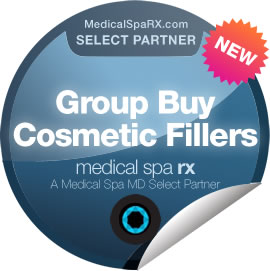Surgeons hope to earn a cut of spa market
 03-13-2006
03-13-2006 By Rob Roberts, Kansas City Business Journal
Dr. Allen Guinn III has seen feast and famine in the field of cosmetic surgery during the past five years.That's why he moved his Aurora Plastic and Hand Surgery practice into the former site of the Tuscany Manor restaurant -- a 19th-century mansion in Lee's Summit.
Set on a hilltop near Interstate 470 and Douglas Road, the stately structure is the most recent -- and novel -- of several Kansas City-area sites where traditional plastic surgery practices have augmented themselves with trendy medical spa services.
The growing popularity of spas offering minimally invasive procedures such as microdermabrasion, chemical peels and Botox injections helped boost U.S. spending on cosmetic surgery by 24 percent -- to $8.4 billion -- between 2000 and 2004, according to the American Society of Plastic Surgeons.
During that span, the number of minimally invasive procedures performed each year rose 36 percent, from 5.5 million in 2000 to 7.5 million in 2004.
Meanwhile, the number of face-lifts, tummy tucks and other cosmetic surgical procedures declined 8 percent, from 1.9 million in 2000 to 1.7 million in 2004.
"Luxury spending dropped off tremendously after Sept. 11, 2001," said Kathy Guinn, who manages her husband's practice, "and plastic surgeons were struggling to find new niches."
Allen Guinn, a board-certified plastic surgeon for 10 years, found two. For starters, he began placing more emphasis on hand surgery, which unlike cosmetic surgery generally is covered by insurance. Then, at the urging of his wife, Guinn agreed to the addition of spa services, ranging from facials and massages to collagen injections and laser treatments.
Previously located in a Blue Springs medical office building, Aurora Plastic and Hand Surgery had a March 3-4 grand opening at its new 7,000-square-foot location, where spa clients are surrounded by period furniture, antique knickknacks and lots of before-and-after patient photos.
In addition to providing a new revenue stream, Guinn said "the spa is attracting clientele who might be interested in cosmetic surgery at some future date."
Missouri law does not allow Guinn to perform operations requiring anesthesia in the wood-frame mansion, so he continues to do his surgery at area hospitals. But within the next couple of years, he plans to build a surgical center on the wooded mansion grounds, which he calls "our own little Central Park."
The unusual setting is a new wrinkle in the wave of medical spas that started on the West Coast and began sweeping the nation a couple of years ago. Thus far, the trend has been dominated by shopping center locations, which have drawn criticism from some traditional plastic surgeons.
"You need to practice medicine in a medical setting, and a spa is certainly not one of them -- especially these mall shops," Dr. Jack Bruner, chairman of the American Society of Plastic Surgeons, told the Los Angeles Business Journal last year.
Guinn said such criticism is fueled by the fact that most states, including Kansas and Missouri, allow nurses and estheticians to perform minimally invasive procedures without a physician present.
"But here, those procedures are being done in a doctor's office, with the doctor in attendance and, a lot of the time, with the doctor doing them," he said.
Several other local plastic surgeons can make the same claim, said Dr. Gary Baker, an Overland Park cosmetic and reconstructive plastic surgeon. But there's really not much need for doctor supervision of minimally invasive cosmetic procedures, he said.
Few of the procedures are highly effective, Baker added, but many local practices have added them, apparently in response to the proliferation of salons and day spas offering them.
"I think what happens is that people think, 'I have to keep up, therefore I have to create a spa,'" Baker said. "That's kind of how surgeons think. They're a little bit like the lemmings, in my opinion."
 Medical Spa MD | Comments Off |
Medical Spa MD | Comments Off | 


